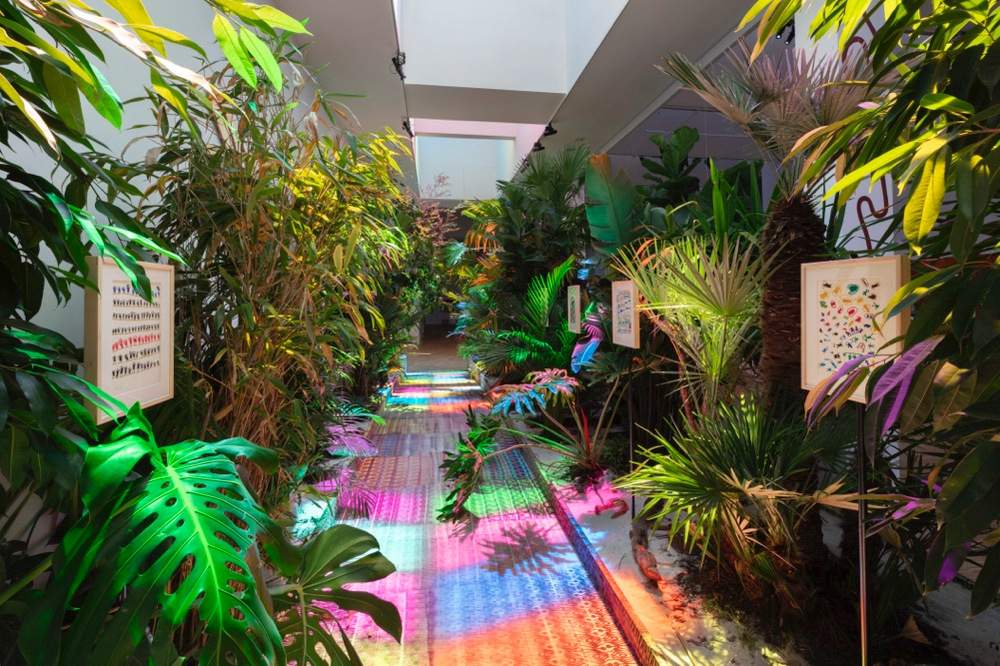Through Oct. 29, 2023, Triennale Milano is hosting the exhibition We are forest, organized as part of the partnership with Fondation Cartier pour l’art contemporain, under the artistic direction of anthropologist Bruce Albert and Fondation Cartier’s general artistic director Hervé Chandès, and with installation by artist Luiz Zerbini.
The exhibition draws inspiration from an aesthetic and political vision of the forest as an egalitarian multiverse of living peoples, human and nonhuman, and as such offers an allegory of a possible world beyond our anthropocentrism. The exhibition aims to stage an unprecedented dialogue between thinkers and defenders of the forest; between indigenous artists, from New Mexico to the Paraguayan Chaco via the Amazon, and non-indigenous artists (Brazil, China, Colombia, France).
Thus, works by twenty-seven artists from different countries, cultures, and backgrounds, mostly Latin American, many of them from indigenous communities, are on display. More than 70 percent of the works in the exhibition come from the Fondation Cartier collection and are intended to tell the story of the foundation’s long-standing relationship with artists from some indigenous communities inSouth America.
The artists involved are Fernando Allen (Paraguay), Efacio Álvarez (Nivaklé, Paraguay), Cleiber Bane (Huni Kuin, Brazil), Cai Guo-Qiang (China), Johanna Calle (Colombia), Fredi Casco (Paraguay), Alex Cerveny (Brazil), Jaider Esbell (Makuxi, Brazil), Floriberta Fermín (Nivaklé, Paraguay), Sheroanawe Hakihiiwe (Yanomami, Venezuela), Aida Harika (Yanomami, Brazil), Fabrice Hyber (France), Morzaniel Æ—ramari (Yanomami, Brazil), Angélica Klassen (Nivaklé, Paraguay), Esteban Klassen (Nivaklé, Paraguay), Joseca Mokahesi (Yanomami, Brazil), Bruno Novelli (Brazil), Virgil Ortiz (Cochiti Pueblo, New Mexico, United States), Santídio Pereira (Brazil), Solange Pessoa (Brazil), Brus Rubio Churay (Murui-Bora, Peru), André Taniki (Yanomami, Brazil), Edmar Tokorino (Yanomami, Brazil), Adriana Varejão (Brazil), Ehuana Yaira (Yanomami, Brazil), Roseane Yariana (Yanomami, Brazil), Luiz Zerbini (Brazil). What the artists have in common is their approach to and relationship with the forest element.
As explained by Bruce Albert, the forest that is the subject of this exhibition is a forest that is inspired by the philosophy of the peoples who inhabit it and are its guardians. It is a metaphysical forest in which human and nonhuman peoples coexist equally and in permanent interdependence.
The goal of the exhibition is “to rethink our position as human beings, our place among living things in a much more humble way than we do today, to avoid the otherwise inevitable environmental catastrophe,” as Bruce Albert pointed out.
Fondation Cartier works to stimulate encounters and exchanges among artists, a principle behind the birth of this exhibition, the result of conversations from which unprecedented partnerships have emerged.
Image: Luiz Zerbini, installation of the exhibition We are Forest, 2023. Courtesy Fondation Cartier. Photo by Andrea Rossetti
 |
| Triennale Milan, indigenous and non-indigenous artists narrate the forest as an egalitarian place |
Warning: the translation into English of the original Italian article was created using automatic tools. We undertake to review all articles, but we do not guarantee the total absence of inaccuracies in the translation due to the program. You can find the original by clicking on the ITA button. If you find any mistake,please contact us.